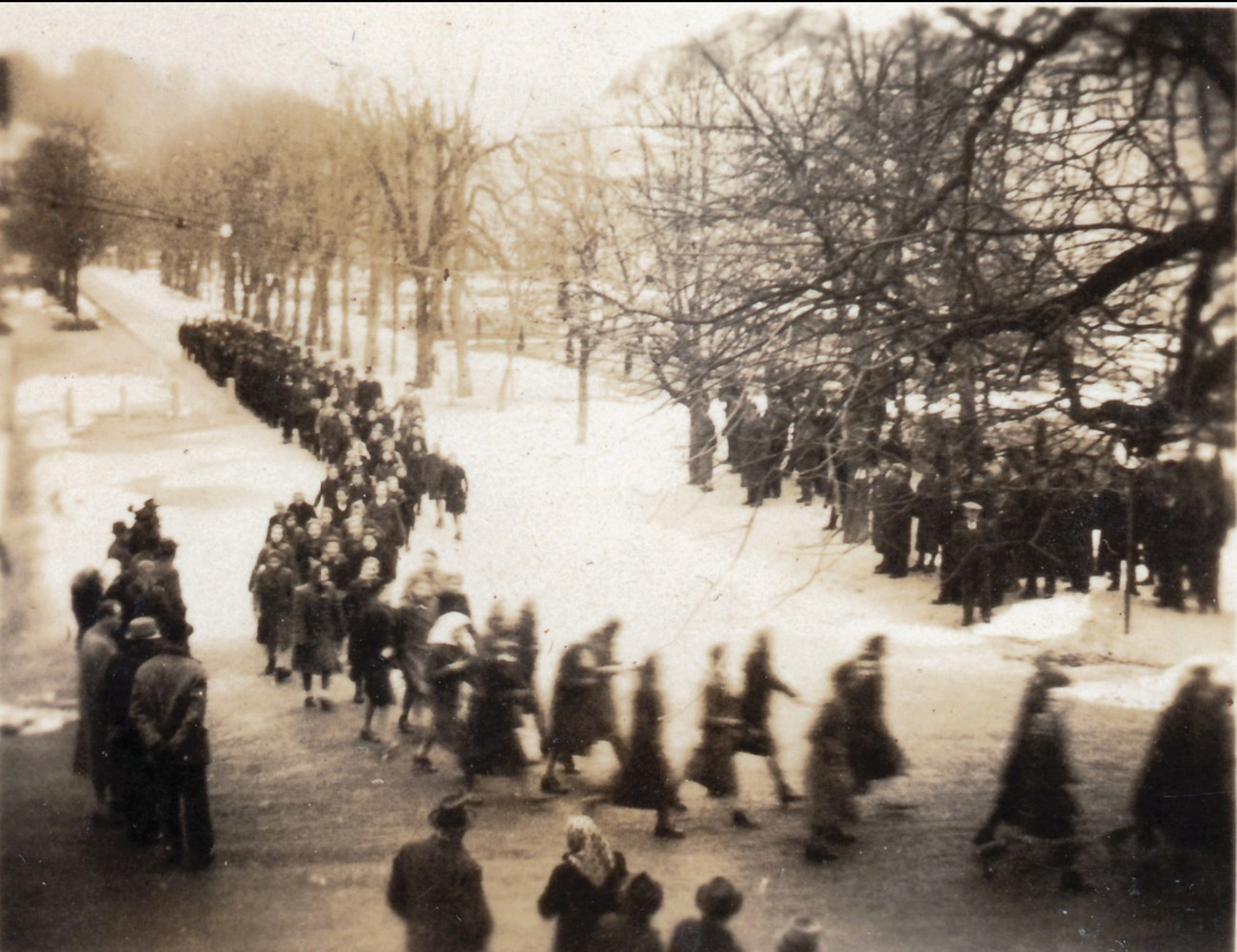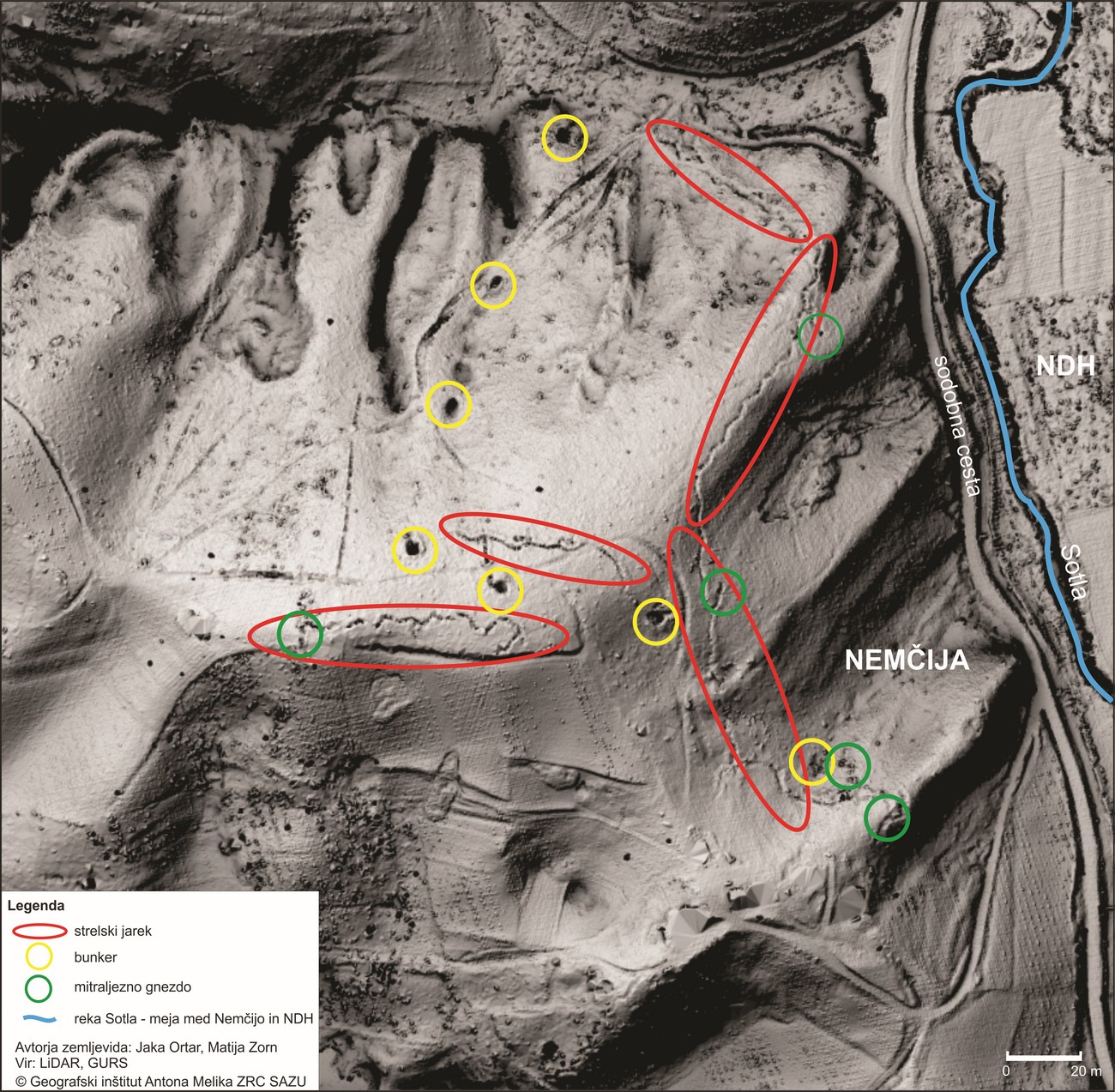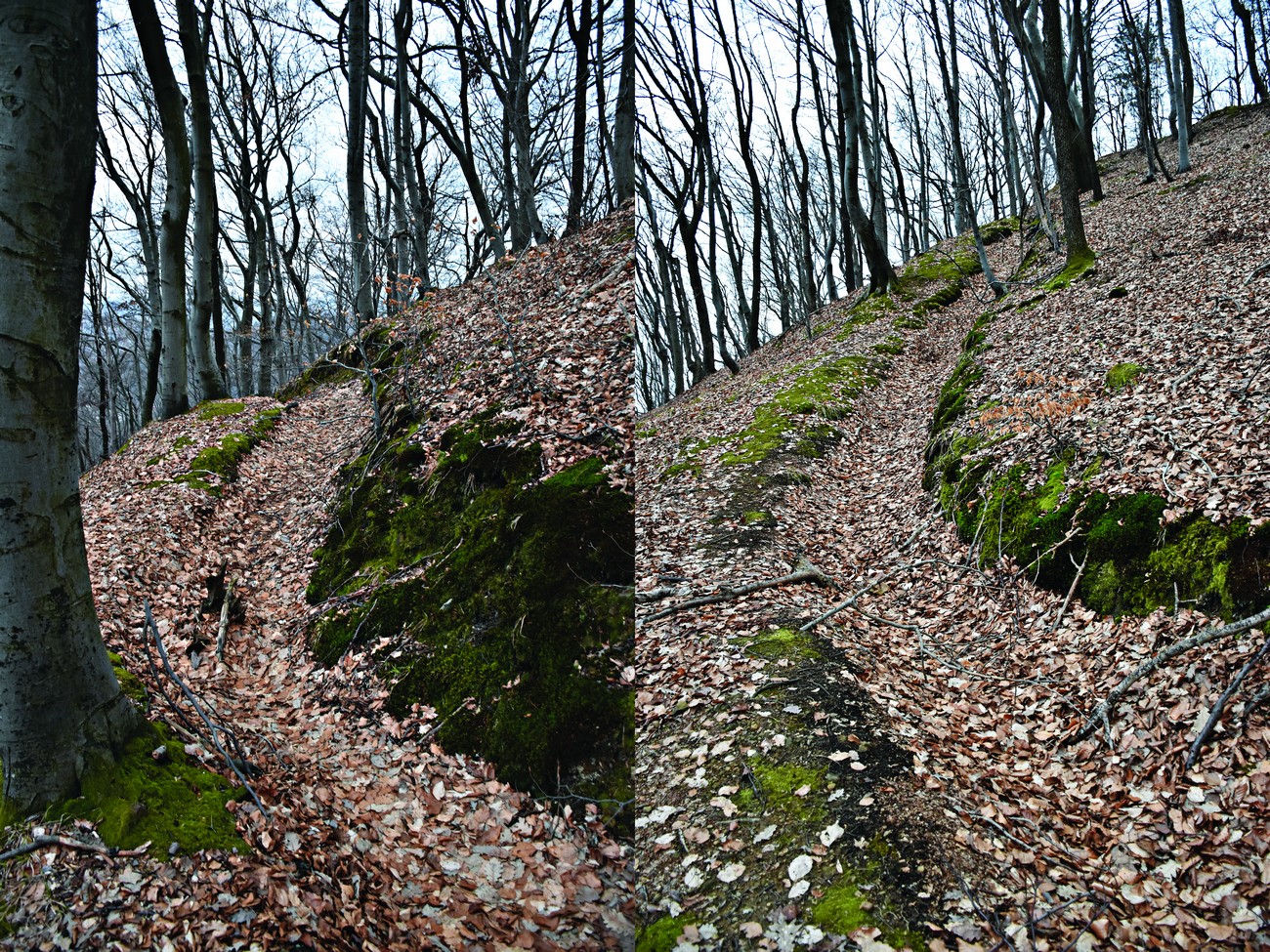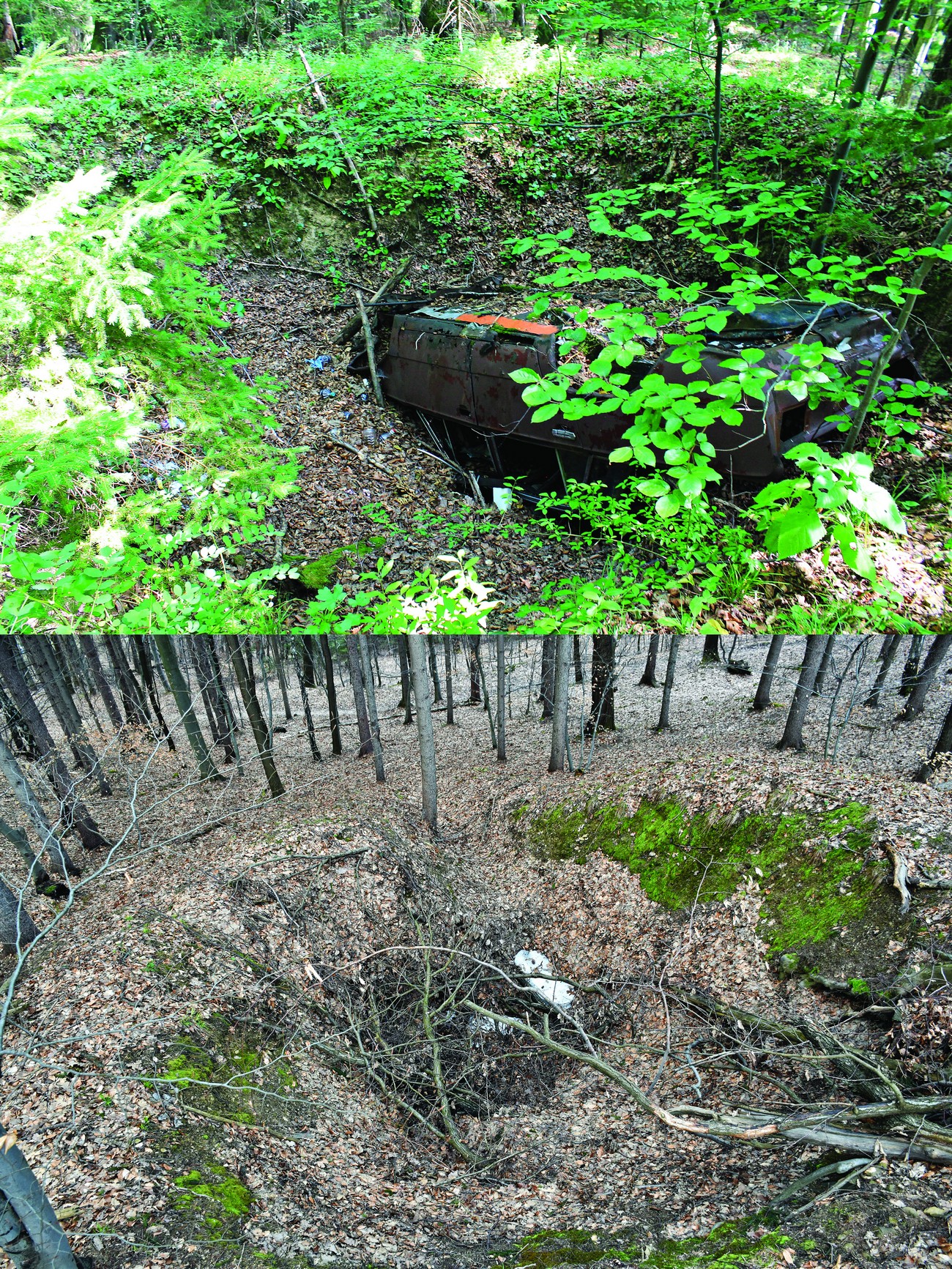In the second half of 1944, in anticipation of a potential landing of the Allies in Istria, the Germans began extensive fortification works at the southern border. They fortified it heavily with firing trenches, machine gun nests and bunkers. The terrain for preparing the combat system was mainly dug up by prisoners of war; often, the local population was also forced to perform such work. Due to the grand scale of the project, which covered a zone, tens of kilometres long, and the labour shortage, the excavations were also performed by German soldiers.
The defensive trenches were between 1.5 and 2 metres deep; a machine gun nest, about 2x2 metres in size, was positioned roughly every 50 metres (depending on the terrain); a larger bunker was excavated at a distance (about 100 metres). It could accommodate 12 to 16 persons; it was covered with layers of wood and soil, so a potential bomb explosion would cause minimum damage to the interior. All of the excavations were fortified with wooden logs. The wood was cut down in the nearby forests and the owners were not paid for it.
Penal Work Camp in Rogaška Slatina
Preparations for the defensive fortification of the border in the vicinity of Rogaška Slatina began in September, while the actual work began in October 1944. For that purpose, they set up a penal work camp called “Straflager des Stellungsbaues Bauabschnitt Untersteiertmarkt”. The camp, which was originally located in the Matanič residence (the present-day Bjelovarski dom), and later in the primary school, was enclosed by a strip of barbed wire barriers, from 4 to 6 metres wide. It was originally intended for persons who had been ordered to dig trenches but had not responded to the summons from the occupation authorities, or whose work proved to be unreliable. In early 1945, the camp also housed political prisoners of the Celje Gestapo; mostly captured Partisans and Liberation Front activists. The camp is said to have housed between 300 and 400 convicts daily; they lived there under very poor conditions. In fact, the camp – and the attitude towards the prisoners – did not differ much from the infamous German concentration camps. The camp's supervisor was the “Landrat” of the Celje District, Anton Dorfmeister, while the head of the camp was Kurt Kornberger, who was assisted by deputies Gomolka, Meninger and Gratkorn. All were members of the SA.
The End of the War
It all ended in early May 1945. Hitler was dead and Nazi Germany was destroyed, military and politically speaking. In the last few days of the war, endless queues of defeated German soldiers (the Von Leer Army) and their collaborationist units wound their way through Rogatec and Rogaška Slatina. Still, the collaborationist units in particular continued their mass plunder, killing innocent people in the vicinity of Rogaška Slatina. The birth registers and death certificates reveal that even three weeks after Germany capitulated, in late May 1945, the Ustasha murdered several people, including women (e.g. in Boč). According to the school chronicle of the old school in Kostrivnica, the Ustasha roamed around Boč for a long time after the war had ended.
The police, gendarme, frontier and military troops stationed in Rogaška Slatina during the war withdrew by 7 May. Among the last to leave was the “Bürgmeister” (German mayor) Heribert Miglitsch; at 10 a.m. on 8 May, he and the head teacher Fritz Högler drove across the former Austrian border to the ruined Reich. They were immediately followed by Wolf (the director of the health resort), Hermann Neckermann, Weisheit (the manager of the glassworks) and the rest of the mayor's closest colleagues. On that very day, Germany unconditionally capitulated in Berlin.



